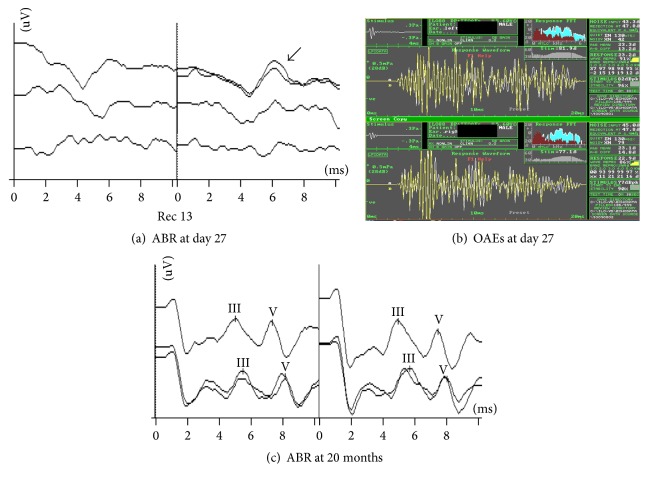Figure 2.
Audiological data from a HR infant of the early years of this study (risk indicators: prematurity, low birth weight, hyperbilirubinemia/phototherapy, and asphyxia). (a) Initial ABR recordings showing atypical waveforms at 90, 80, and 70 dBnHL (from above downwards). “Atypical” ABR waveforms were not a rare finding among infants suffering from AN who eventually showed full ABR restoration. We use the term “atypical” to describe any unexpected waveform, consisting of unpredictable yet reproducible waves. The black arrow denotes such a waveform. (b) Normal otoacoustic emissions were obtained bilaterally within the same session. (c) Last ABR testing at the age of 20 months. Typical and replicable waveforms were elicited at 60 and 40 dBnHL bilaterally (full ABR recovery). Information from the parents and behavioral audiometry validated the presence of normal hearing threshold.

